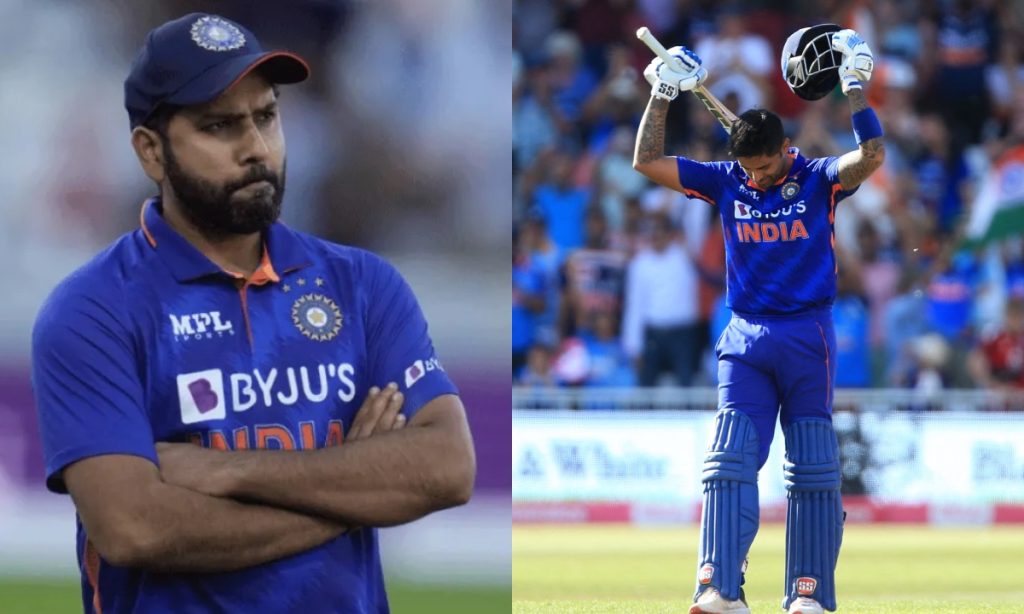The scrutiny on Suryakumar Yadav‘s place and his potential in India’s ODI side increased vastly after Mitchell Starc dismissed him lbw for two first-ball ducks in the first two ODIs of the ODI series.
Playing in place of the injured Shreyas Iyer, Suryakumar Yadav barely got a sighter in both matches before he was sent packing by a menacing Mitchell Starc, who was making full use of the assistance from the pitch and conditions.
Starc is, after all, an all-time great, as Sid Monga writes in his terrific piece for Cricinfo.
I have been carrying this belief for the past few years, having watched the game for the past 20 years, that Starc is the deadliest, the most difficult to play, white-ball fast bowler when the conditions are helpful even a little bit.
Left-arm, Fast, Swinging both ways: There's not deadly in the world than Mitchell Starc when he gets even little assistance from the surface…
Simply sensational..#INDvsAUS— Jatin Khandelwal (@Jatin_Cricket_) March 19, 2023
Starc cleans up de Kock's middle pole!!🔥🔥🔥 Exquisite from Starcy.#SAvsAUS
— Jatin Khandelwal (@Jatin_Cricket_) February 21, 2020
This increased criticism by the fans of the team management to persist with Suryakumar Yadav in the ODI XI and questioning of the latter’s abilities to crack the ODI code based on two failures – where most of India’s batters struggled against Starc and the Aussie pacers in the two games – seems a bit harsh and even unfair.
Starc's ball to SKY was 90 mph, it swung 2.9 degrees and then seamed 0.61 degrees. It pitched on 5.99m length on middle-and-off stump. The total reaction time to from release to interception was 0.46 seconds.
No human being in history can play that. It's literally unplayable.
— cricketingview (@cricketingview) March 19, 2023

For, Virat Kohli and KL Rahul also got out in similar manners in the 1st and 2nd ODIs respectively, and to be honest, even Bradman or Tendulkar would have also found it really challenging to tackle Starc within those circumstances: left-arm angle, really high pace to counter for even the slightest of swing and seam movement.
SKY’s ODI numbers are, yes, mediocre – average of 25 in 20 innings and a strike rate of 102 with 2 fifties – and certainly disappointing from what we have seen of him in T20Is, and, on the basis of which he was drafted into the ODI side.
But there is some context that’s needed here. He made his ODI debut in July 2021, and his first six ODI innings – against Sri Lanka, South Africa, and West Indies – were all scores of above 30, played in not-at-all batting-friendly surfaces in Colombo, Cape Town, and Ahmedabad.
Then, from his innings number 8 to innings number 20 until now (from July 2022 to March 2023 – that’s 13 innings spread across almost 9 months) that his slump in ODI is recorded. In all these knocks, he’s gone past 30 only twice and not reached fifty.
As the focus was on T20Is last year, his ODI knocks were mostly seen as opportunities to get in the ODI groove. But now, with the ODI World Cup looming, and Iyer being injured and Pant al but ruled out of the World Cup, the management really wants SKY to have success in the middle-order.
“We don’t know about Iyer’s return. So, at this point in time, there is a spot available,” Rohit Sharma said. “So we have to play him (Suryakumar). He has shown a lot of potential with the white-ball and I have said it many times before, guys with potential will be given a run.”
![]()
![]()

For me, I’m not really concerned about his twin dismissal against a searing Mitchell Starc. Rohit and Dravid didn’t do much good to SKY by putting him at number 4 either; batting in the 5th over of an ODI isn’t what should be asked of him as much as getting the motor running in the middle overs.
But the upsides that his potential success would bring to the ODI side – a blockbuster batter in the middle-overs could really put the weight of the game on your side of the balance – is too big to ignore; to not give him enough chances to fail; to not give him a stretch of 8-9 games, especially in the middle-overs to make the kind of impact that is expected of him.
“Of course, we have seen [his game] and he knows that he needs to do well in the slightly-longer format of the game as well. Things are there in his mind as well. Guys with potential will have enough run (of games) so that they don’t feel like ‘okay I wasn’t given enough chances in that particular slot’. He needs that consistent run, like back-to-back games, 7, 8 and 10 games like that. So that he feels more comfortable,” Rohit said.

